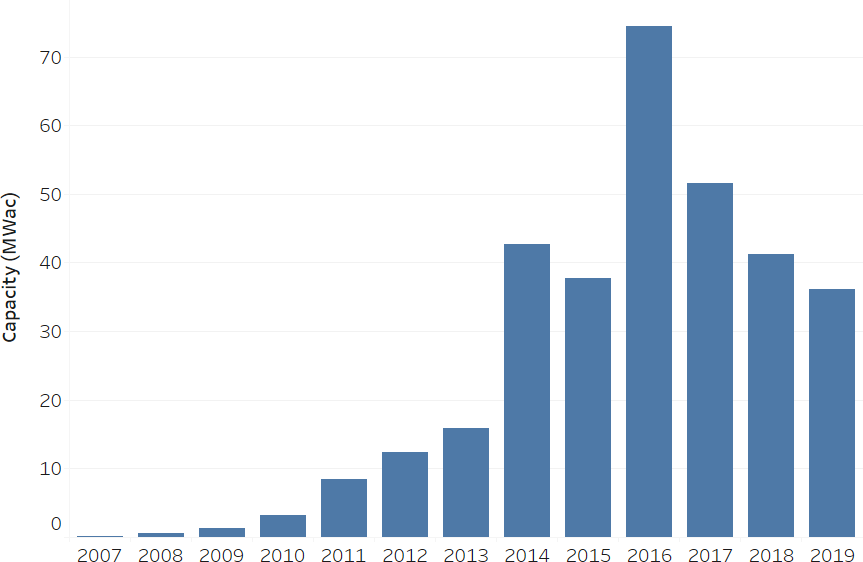An update of Vermont Solar Pathways Report shows that solar progress in Vermont has declined steadily over the last three years. The current annual installation rate would not be sufficient to reach the 20% by 2025 Solar Pathways target.
“The update sends a mixed message” says the study’s lead author, David Hill, PhD. “On one hand the growth rates required to meet the target are attainable, and have been demonstrated in the period from 2014 to 2019 in both Vermont and national markets. During the last three years Vermont’s solar market has seen declines that if not corrected will fall well short of the solar pathway potential.”
Funded by the U.S. Department of Energy with research carried out by VEIC, the VT Department of Public Service, and the Regulatory Assistance Project, showed definitively that solar can provide 20% of Vermont’s electricity by 2025 and can do so with costs that are less than 1 percent of total annual energy expenditures.
Key findings from the report demonstrated that:
- Vermont’s electric grid can handle 20 percent solar. Generating 20% of the projected electricity consumption in Vermont by 2025 will require an estimated 1,000 MW (1 gigawatt) of installed solar capacity. Smart grid optimization and careful planning will enable an advanced solar future with lower costs.
- Solar is a good investment. By 2050 Vermont would see $8 billion of net benefits (not including the value for reducing carbon dioxide or other environmental benefits).
- Solar is affordable. Investing in efficiency and solar can yield significant economic returns for Vermonters and is less costly than relying on imported gasoline, fuel oil, and other fossil fuels.
- Solar can help low- and moderate-income households. Projects that combine solar and efficiency can increase energy affordability for low- and moderate-income households. Renters and people without good sites for solar need to be able to join community solar systems.
- There is room for solar. Vermont has enough land and sunlight across the state to meet 20% of electricity needs with solar by 2025 – it would only require approximately 0.1% of Vermont’s land area to meet this goal (approximately the size of Montpelier).
“Policy changes detrimentally slowed solar progress over the last three years, resulting in lost opportunity for our climate, economy, and all Vermonters,” said Olivia Campbell Andersen, Renewable Energy Vermont Executive Director. “The legislature has the opportunity now to create a more renewable and climate resilient Vermont by enacting a 100% Renewable Electricity Standard (S.267).”
The report shows the marked decline in Vermont’s new solar capacity in the years since 2016.

Vermont solar incremental new capacity “online,” by year, from the database of Certificates of Public Good, as of mid-October 2019. The installed capacity is assumed to be lower than what the applicants estimated during the permitting process.
The Study evaluated the most cited limitations of solar—cost, space requirements, and intermittency of energy generation, concluding that it is possible and financially beneficial to overcome those limitations and move toward a future in which more of Vermont’s energy comes from local renewable sources.
“Every kilowatt of renewable power that we fail to produce here in Vermont enables fossil fuel producers elsewhere in our region. Reliance on gas and other fossil fuels furthers destructive climate change and a continuous drain on Vermont’s families and economy,” added Campbell Andersen.
“The state can do this, while strengthening its economy. A timely course correction now will bring Vermont the economic and environmental benefits enumerated in the report.”
The full report is available online at www.veic.org/vermont-solar-pathways.
